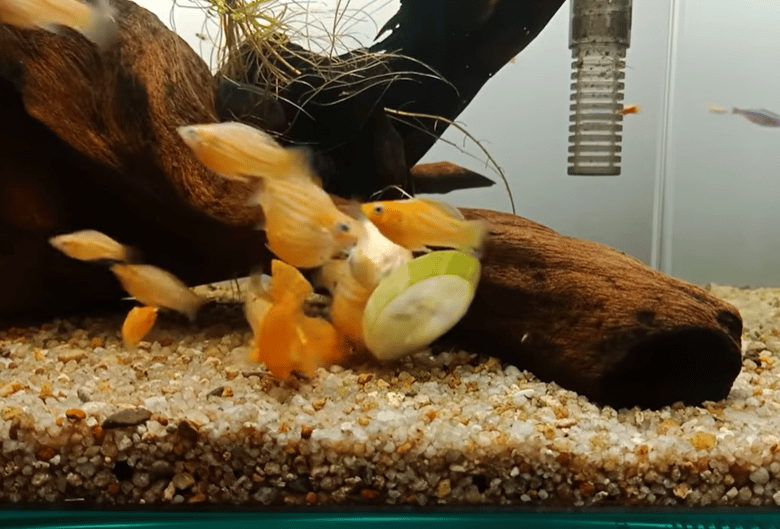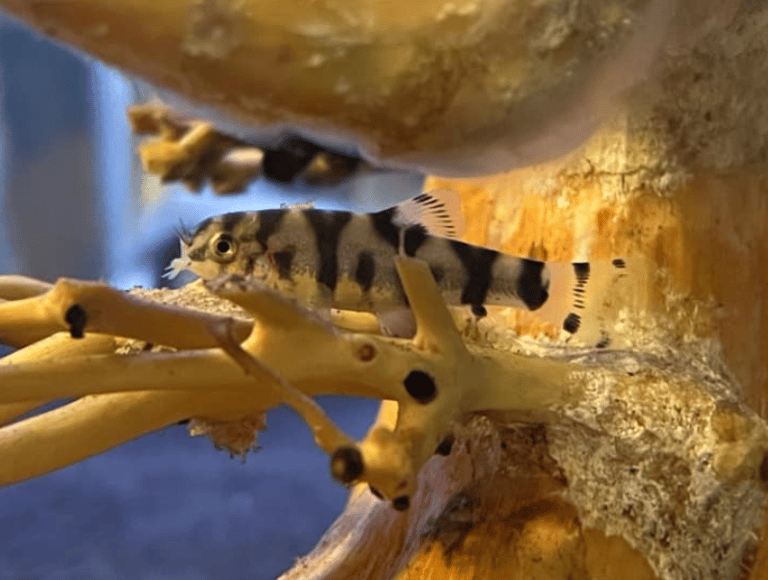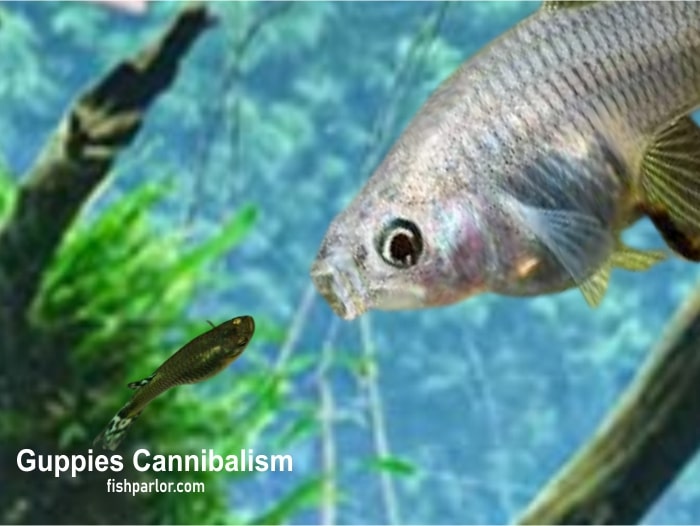Cucumbers are greatly nutritious and thus safe to feed to fish as a treat. Fish that eat cucumbers stay hydrated, do not suffer from constipation issues, have healthy bones, and have a robust immune systems. For best results, give your fish cucumber once every week.
Importance: Cucumber is an excellent treat for fish as it is rich in vitamin C, an antioxidant helpful for building stronger immunity and healing wounds. The vitamin also neutralizes the harmful effects of toxic chemicals like chlorine on your fish.
Cucumber is also rich in vitamin K, which is important for blood clotting and bone hardening. Without sufficient vitamin K, fish suffer from a slower blood clotting process in case of an injury, less blood volume, and will have an unusual appearance of gills.
The veggie is also a great source of fiber which helps in digestion. It is thus beneficial mainly to young fish and other fish species, such as the goldfish prone to constipation or indigestion problems.
Minerals like calcium, phosphorus, and manganese in cucumbers are crucial for maintaining bones and teeth.
Here is data showing the nutritional value of 100 mg of cucumber by the USDA
| Water | 95.23g |
| Energy | 15 Kcal |
| Protein | 0.65g |
| Fat | 0.11g |
| Carbohydrate | 3.63g |
| Dietary Fiber | 0.5g |
| Calcium | 16mg |
| Iron | 0.28mg |
| Magnesium | 13mg |
| Phosphorous | 24mg |
| Potassium | 147mg |
| Sodium | 2mg |
| Vitamin C | 2.8mg |

How long to keep a cucumber in a fish tank
Like every food you provide to your fish, you need to get rid of cucumbers sooner to safeguard your fish tank against any decaying organic matter that can pollute the water. Therefore, leave cucumber in a fish tank for only 3-4 hours.
Too much decomposing organic matter can result in a bad water smell, ammonia spikes, tiny worms in the aquarium, and bacterial infections in the fish.
NOTE: Giving your fish cucumber sitting in the freezer or refrigerator for weeks is unhealthy. If it is a must to store the vegetable, put it in a tightly sealed container, and refrigerate it for a duration not exceeding three days.
How to feed cucumber to your fish
Thoroughly wash your hands before you start preparing cucumbers for your fish. The number of cucumbers will depend on the tank size.
1. Start cleaning the cucumber with cold water to remove any dirt. Use distilled water to rinse the vegetable, as tap water contains chlorine, which may harm the fish.
2. Chop the cucumber into around 1 cm thick slices, with the skin removed. This makes it easier for the fish to eat them.
3. Subsequently, boil a small amount of water in a pot. Then, blanch the slices or cucumber cubes in a steamer basket into the pot with boiled water for two minutes. Alternatively, boil the small pieces of cucumber on a stove for about five minutes.
4. Poke the boiled cucumber with a fork or toothpick that is not dirty to see if the fruit is softer for eating. Then, cool them by placing them in a bowl of cold water.
5. Drop a few cucumber slices into the aquarium, and let the fish enjoy the treat.
How to remove cucumbers from a fish tank
Cucumbers can be removed from a fish tank using a gravel cleaner. An aquarium net or a scooping object can also come in handy.
It is not a bad idea to add some bottom feeders, such as snails, shrimps, and catfish in the tank to help keep the environment healthy. The bottom feeders feed on leftovers like cucumbers.
Can cucumbers cause ammonia spikes in the tank?
Ammonia spike is one of the reasons why aquarium fish die uncontrollably. Cucumbers can cause ammonia spikes in the tank. A cucumber left over in the tank can rot and produce ammonia, a toxic gas that contaminates the tank water.
In conclusion, cucumber is very beneficial to fish and should be offered as a treat every week. Do not let the cucumber overstay in the tank, as it can degrade and pollute the water.
References
- University of Maine Cooperative Extension: Food Safety Facts
- WebMD: How to Clean Your Fish Tank


